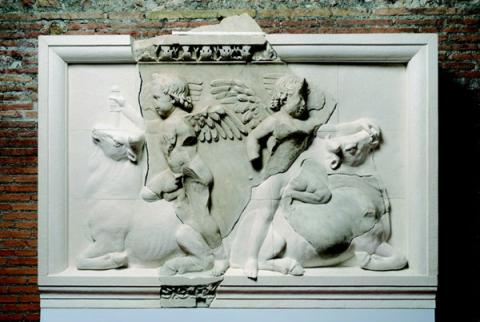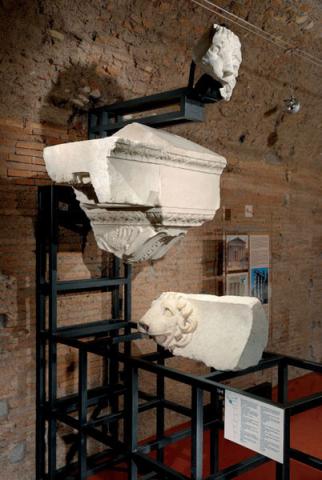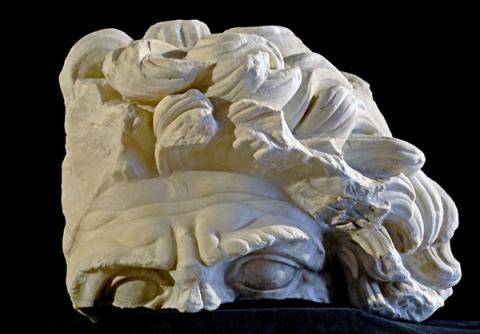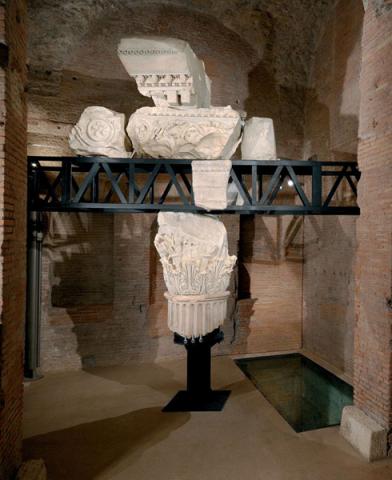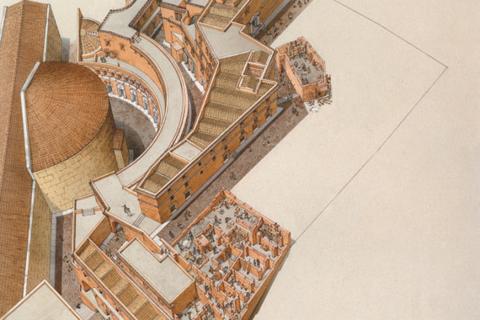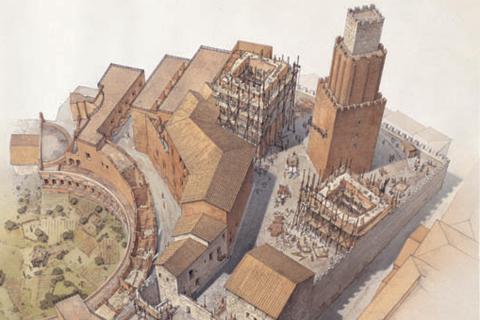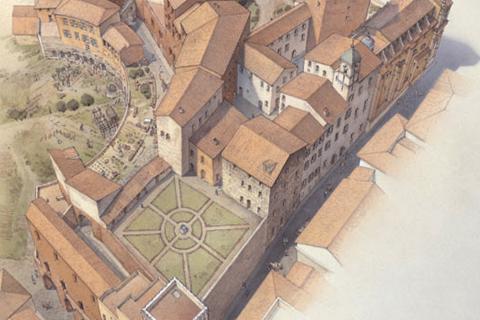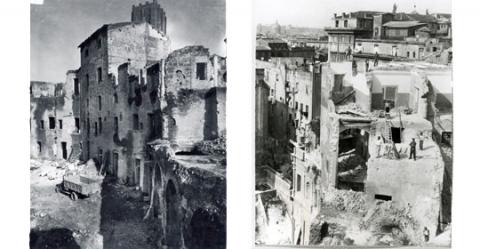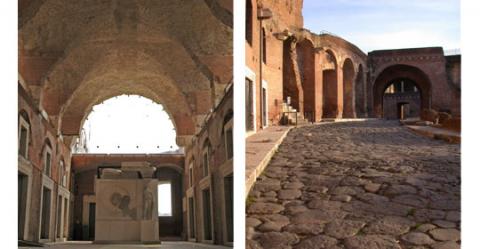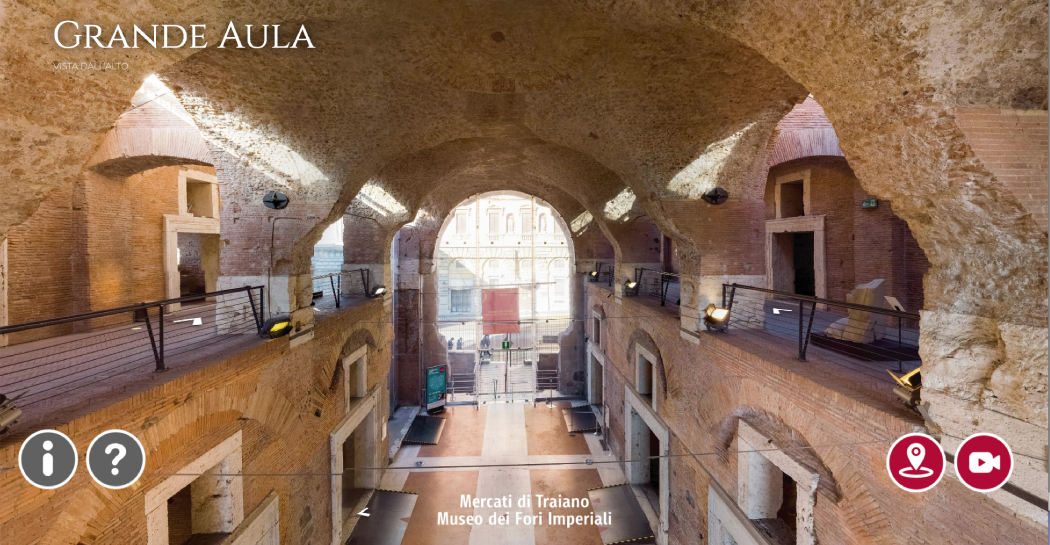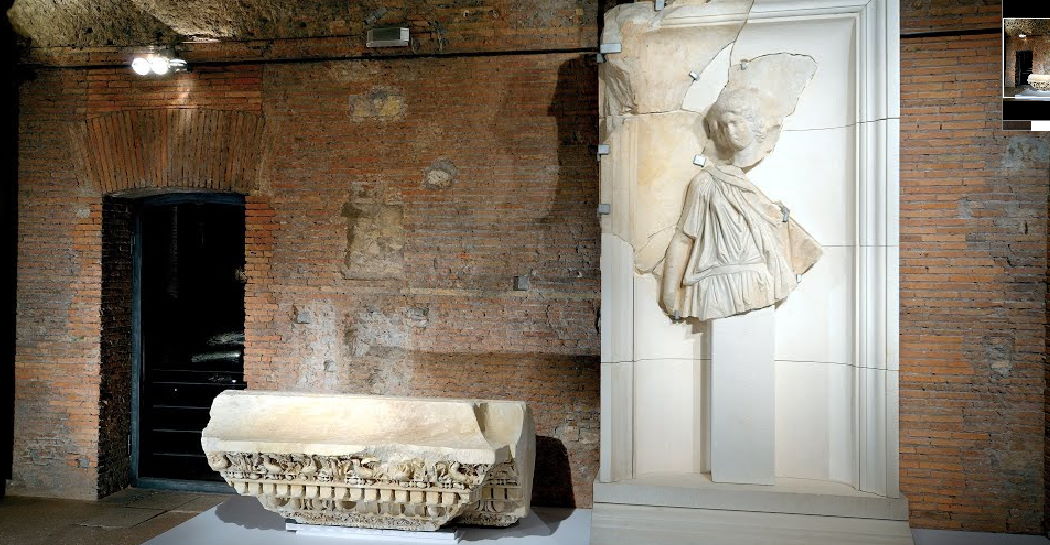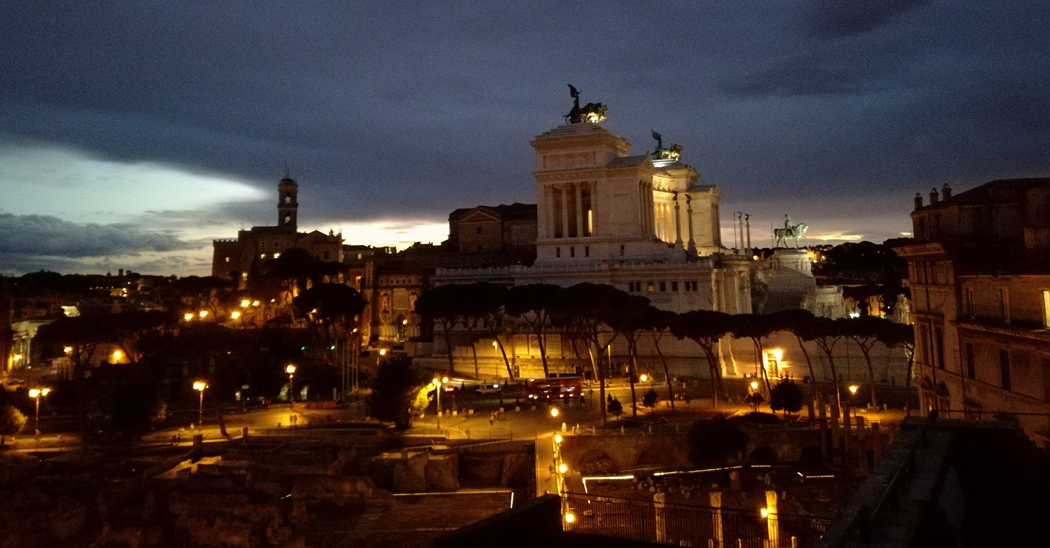History of the “Markets” of Trajan
The history of the “Markets” of Trajan started with the planning of certain proprietary works during the construction of the last and greatest of all the imperial forums, that of Trajan. Even if we have clear accounts to classify the Markets of Trajan, ancient records do not offer steadfast evidence on the imperial financers and the conceptual origins of the project. The most plausible explanation is that the great complex was perhaps conceived as a sole unit along with the neighbouring forum.
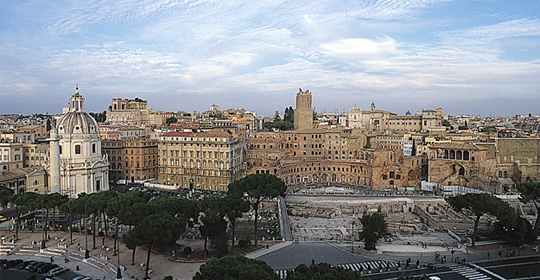

It is highly likely that the complex had already been ordered by Emperor Domitian and taxation stamps, the only direct source available, show an index number consistent with the Domitian era. A theory further sustained by our knowledge of the ambitious building programme envisaged by this emperor. Another premise puts the selling off of a notable quantity of stockpiled bricks and building materials after the emperor’s murder as the main impetus for the construction of the complex. However, archaeological data gathered in recent studies (2003-2007) seem to indicate that preliminary works for an imposing architectural complex had already began under Domitian. Works included terracing walls and sewage piping.
Current knowledge leaves little to support the traditional interpretation of the structure as having a primarily commercial use. Recent archaeological discoveries have been fundamental in contributing to a rereading of the complex. Inscriptions on the structure’s main beams, which were reused as braces in the ground works for the Milizie Gardens, make testament to a procurator fori traiani, one Horatius Rogatus, who would have restored the forum after a fire in the 3rd century AD.
The functional differences of the various buildings that make up the Markets of Trajan are evident that the lower section had close association with activities administered by the adjacent forum with the upper section instead being dedicated to activities of a more managerial and administrative nature.


























